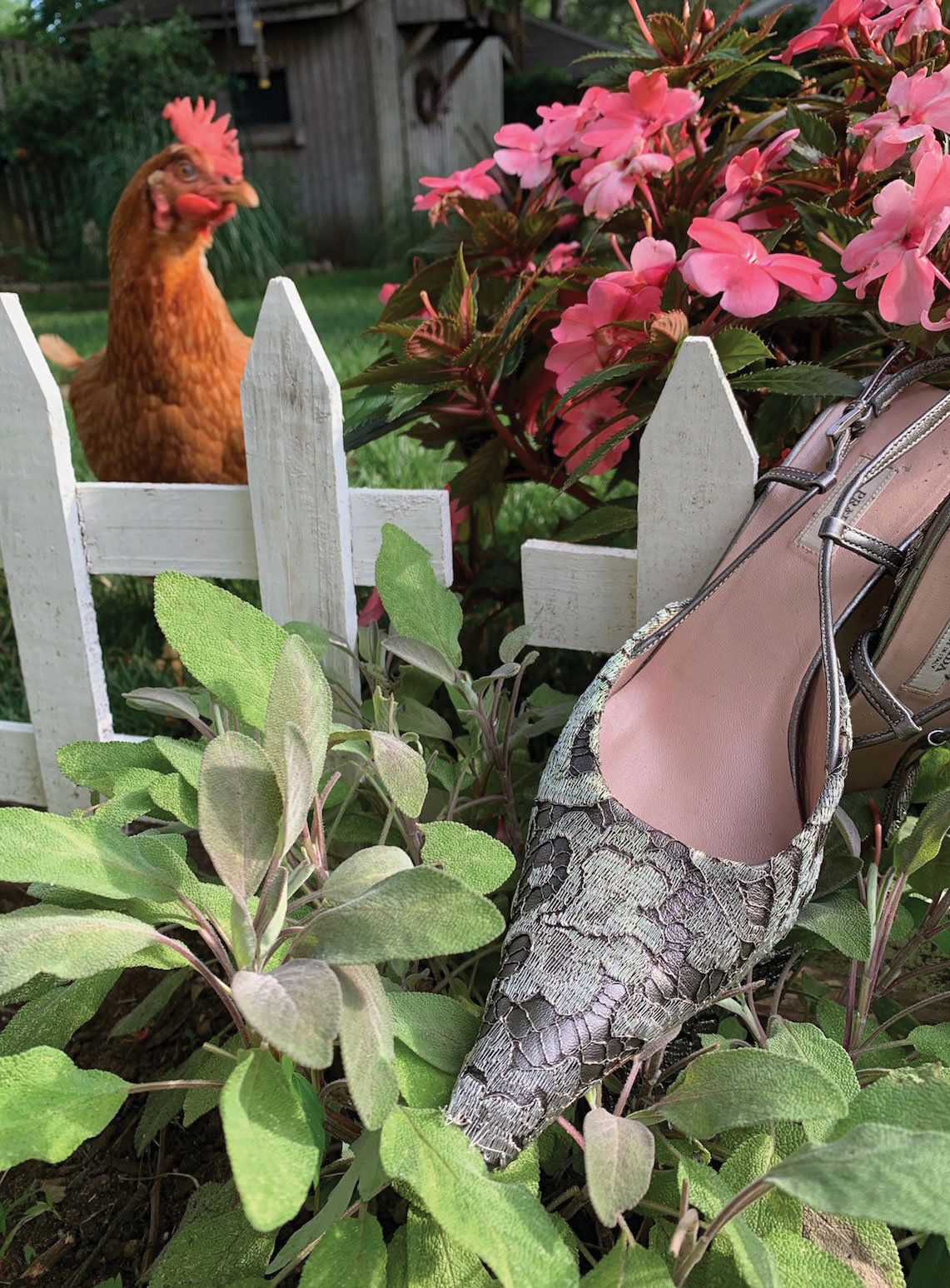- © 2025 Annapolis Home Magazine
- All Rights Reserved
By Kymberly Taylor, The High-Heeled Gardener

How did this column begin? Before work one morning, I quickly planted a flat of marigolds in my high heels. Then, clumped to a meeting attended by impeccably groomed clients, tracking fresh dirt across a very white carpet, embarrassing my colleagues. I arrived at this engagement and countless others with mud clinging to my high heels so earned the nickname “The High-Heeled Gardener.”
I am obsessed with shoes and plants, for they each have special qualities, things to say and to infer. So, my mission in this column is two-fold: to encourage you to acquire shoes with personality (high-heels optional), and to inspire busy folks to garden in whatever shoe one happens to have on. Pradas are tougher than they look (they are Italian) and don’t enjoy being tucked away in their original velvet bag. They prefer to be seen, and paired with just about anything, including jeans and the right pair of shorts. Tend to your garden, even just a little, each day. To help you, the plants I write about have cheerful temperaments and are well-suited for even the busiest people.
For the herb garden, consider purple sage. This ancient perennial, native to the Mediterranean region, is lesser-known than the grey sages but quietly stunning with purple leaves fading to flint grey and green. An herb from the mint family, sage has a sweet, yet savory flavor. Its botanical name, Salvia officinalis, comes from the Latin word salvere, meaning “to be saved.” This makes sense! With its trusty, vigorous growth habit, this tough little plant tells me to perk up and shake off unfortunate occurrences like driving off from the gas station with the fuel hose still in my gas tank and being chased by the police. (The attendant thought I stole it!)
To get over similarly shocking incidents in your day, pick a few leaves, rub them together and inhale a pungent aroma. And, relax. This sage has a forthright independent personality and needs nothing from you, not even water. It grows well in sun or part sun and is heat and drought tolerant. Once planted correctly and established, Salvia officinalis grows happily and productively until the first frost. And, will endure the winter months, maintaining its practical beauty.
Try placing a sage leaf on a piece of good bread with a drop of olive oil. It’s delicious! Sage has outstanding nutritional benefits. A tablespoon contains much higher doses than the recommended daily requirements of B vitamins such as folic acid, thiamin, pyridoxine, and riboflavin, as well as healthy amounts of vitamin C, vitamin E, thiamin, and copper.
Follow Kymberly Taylor, editor-in-chief of AHM, on Instagram and Facebook: @thehighheeledgardener
Annapolis Home Magazine
Vol. 10, No. 4 2019